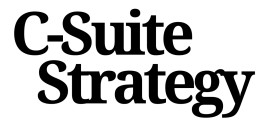
Understanding the Landscape of Modern Financial Strategies
Navigating the Modern Financial Environment
In today’s fast-paced business landscape, understanding the dynamic world of modern financial strategies is more crucial than ever for C-suite decision-makers. A thorough comprehension of the contemporary financial environment can distinguish between success and stagnation in a global market teeming with opportunities and risks. The financial landscape has evolved significantly, influenced by technological advancements, shifting market conditions, and a heightened focus on sustainability and ethics. These changes have necessitated innovative financial solutions to stay ahead. From leveraging insights provided by financial advisors to incorporating real-time data analytics, companies are reshaping their financial strategies to align with market intelligence and global trends. Key factors such as S&P global market indices, Dow Jones insights, and commodity insights offer a benchmark for financial planning and wealth management. By tapping into these resources, companies can anticipate market movements, ensuring that strategic objectives are met with precision and foresight. In addition, risk management plays a pivotal role in modern financial strategies. As companies expand their global footprint, understanding and mitigating credit risk becomes paramount. The role of financial institutions and investment management firms is more critical than ever in providing tailored, strategic financial services and advisories. To delve deeper into how these factors can propel business growth, consider exploring innovative approaches through a financial pathways blog. This exploration underscores the importance of aligning financial goals with overarching business objectives and leveraging technology for financial innovation. By mastering these elements, C-suite leaders can craft robust strategies to enhance their company's wealth, manage risk effectively, and stay ahead in the competitive global landscape.Aligning Financial Goals with Business Objectives
Formulating Financial Objectives for Sustainable Growth
In today's rapidly evolving business environment, aligning financial goals with overarching business objectives is paramount for leaders who aim to stay ahead. The alignment calls for an intimate understanding of both the internal and external factors influencing decisions. As financial institutions navigate global markets, CEOs must integrate a comprehensive view of their company's objectives with financial planning. Financial advisors can play an essential role in shaping these goals by offering specialized insights and strategies. They possess an acute awareness of the global market landscape and provide tailored solutions that harmonize with long-term business objectives. Key steps to consider in aligning financial goals with business objectives include:- Assessment of Current Position: Utilize data and market intelligence to understand where your business stands today. Insights from tools like S&P Global and commodity insights can provide a nuanced view of both threats and opportunities.
- Setting Clear and Measurable Targets: Define what success looks like. Clear indicators and forecasts are vital to ensure that financial strategies complement business aspirations.
- Embracing Cutting-Edge Strategies: Innovation is at the heart of successful financial planning in the modern market. Consider adopting advanced wealth management techniques and leveraging insights from indexes such as Dow Jones and S&P Dow to direct investment management effectively.
- Risk Evaluation and Mitigation: Any robust strategy should integrate risk management. Assess critical risk factors such as credit risk while devising solutions to mitigate potential downsides.
- Cross-Departmental Collaboration: Ensure that departments, especially those involved in investment and tax strategies, work in unison towards common goals. Synchronization within the c-suite is crucial for integrating holistic financial services and investment approaches.
Leveraging Technology for Financial Innovation
Harnessing Technological Advancements for Financial Progress
In the fast-evolving financial landscape, technology plays a transformative role, enabling CFOs and other executives to initiate innovative strategies that drive business success. Incorporating advanced tools and software in financial planning not only enhances efficiency but also provides crucial insights into market trends and investment opportunities. Leveraging technology can help organizations in various ways:- Data-driven Insights: Utilizing platforms like S&P Global or Dow Jones Indices can offer a wealth of data, helping businesses stay ahead of market movements. Real-time data feeds aid in forecasting and assessing credit risk, allowing prompt decision-making.
- Enhanced Investment Management: By leveraging machine learning algorithms and artificial intelligence, companies can refine their financial advisors' strategies and offer customized solutions to clients. This can lead to smarter investment decisions, tailor-made to meet the unique needs of each client.
- Risk Management Enhancement: Advanced software helps in predicting and mitigating potential risks. Tools providing commodity insights and market intelligence allow for a proactive approach, rather than a reactive one, fortifying the financial framework of the enterprise.
Risk Management in the Era of Financial Innovation
Adapting Risk Management to Financial Innovation
In the era of rapid financial innovation, it remains paramount that C-suite executives integrate robust risk management strategies into their organizational frameworks. As businesses evolve and adapt emerging technologies, the complexities of potential risks also grow. Understanding these complexities is the first step in leveraging technology to develop comprehensive risk management solutions.
With market volatility affecting financial planning and investment strategies, clear insights from sources like insights S&P and data analytics become essential tools for modern management. Global market players, such as financial institutions and wealth management entities, benefit immensely by aligning their risk management strategies with cutting-edge technological solutions.
Here are specific approaches to consider:
- Leverage Big Data and Analytics: Utilize advanced data analytics to gain unique insights into global market trends and potential risks. This proactive approach helps in anticipating shifts and shaping strategies aligned with market intelligence.
- Incorporate Financial Advisors: Engaging experienced financial advisors who offer tailored risk management strategies ensures thorough market evaluation and robust planning. Their understanding of credit risk, tax implications, and investment management aids in crafting optimal long-term solutions.
- Embrace Tech-Driven Solutions: Invest in technology products that enhance risk assessment capabilities. Options like real-time risk indicators, forecasts, and s&p global solutions are pivotal in managing market uncertainties effectively.
In summary, aligning risk management strategies with innovative financial approaches allows businesses to mitigate risks while driving growth. Executives equipped with these insights can foster a resilient business ecosystem, preparing the organization for both current challenges and future opportunities.
Building a Resilient Financial Framework
Resilient Financial Frameworks: Paving the Path to Success
Crafting a resilient financial framework is vital for businesses navigating today's dynamic economic environment. This strategic architecture enables organizations to not just endure, but thrive through unpredictable market shifts and economic challenges. Here’s a closer look at how to build such a structure:- Integration of Financial Planning: A robust financial framework integrates comprehensive financial planning, which includes evaluating credit risk, tax implications, and investment management. Thoughtful financial strategies, aligned with overall business objectives, can help organizations effectively weather financial storms.
- Leveraging Insights and Market Intelligence: Utilizing insights from global market data and tools such as S&P Global Market Intelligence or Dow Jones Indices provides a detailed view of market trends and forecasts. Such insights pave the way for informed decision-making, thus enhancing resilience.
- Harnessing Risk Management Solutions: Efficient risk management is the backbone of a resilient strategy. Businesses must adopt cutting-edge solutions to predict and mitigate potential threats. Utilizing commodity insights, and understanding credit and investment risks are essential components of this tactic.
- Consultation with Financial Advisors: Collaborating with experienced financial advisors offers diverse perspectives and strategies that could help in constructing adaptable financial frameworks. These advisors provide invaluable guidance on wealth management, tax planning, and investment management.
- Long-Term View with Flexible Strategies: Embracing a long-term view helps in building a framework that withstands short-term market fluctuations. Flexible strategies facilitate adaptation, ensuring business sustainability and growth even amidst volatile financial climates.














